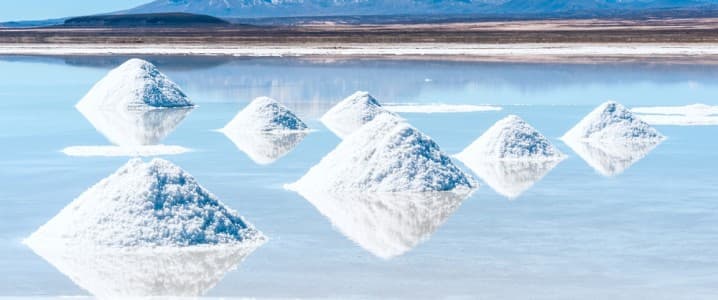
Countries like China are currently focusing their lithium search in Africa, which has proved a treasure-trove of “green” minerals. China is not only one of the largest EV markets in the world, but it produces around 80% of global lithium. Still, the country wants more. It’s estimated that half of the world’s total lithium resources are in South America and Australia. However, Africa is now being looked at with renewed interest.
According to this analysis by news agency Reuters, companies around the world are re-considering projects they’ve previously overlooked. Moreover, China’s interest in Africa has helped spur dozens of nations to follow suit. Back in May, the leading African mining countries gathered for a unique “Investing in African Mining Indaba” in Cape Town. The goal was to discuss the significant business potential of green metals and other valuable minerals.
Delegates were of the opinion that the transition to a low-carbon future would drive the demand for green metal resources. According to this report, the South African Minister of Mineral and Energy Resources, Gwede Mantashe, reminded the delegation that Africa has abundant and untapped resources. Among the most valuable are lithium, copper, cobalt, nickel, and zinc.
Lithium Prices Surge Amid Mining Rush
A recent report from the Voice of America dubbed the hunt for lithium “the new gold rush.” The article also mentioned that China was leading the pack in almost every category. As many know, Lithium prices have seen a near 500% increase in the past year. Of course, most experts expect that trend to continue for some time.
Incidentally, South Africa accounts for the largest percentage of the world’s Platinum Group Metals reserves, while Zimbabwe is ranked third. Manufacturers use these metals in the production of electric or hydrogen-powered vehicles, another growing market.
According to the report, the Chinese conglomerate BYD is in talks to buy six new lithium mines in unspecified African countries. Meanwhile, in the Democratic Republic of Congo, Chinese mining giant Zijin is in a legal battle with Australia’s AVZ minerals. Whomever wins will get control over the Manono mine – possibly the world’s biggest lithium deposit.
Where Is North America on This?
Both the US and Canada are also looking to support battery metals projects in sub-Saharan Africa. In fact, directions have already gone out to American car and truck makers. The bad news? They have to cut down on imported components. Alternatively, they can find or develop domestic or friendly-nation sources to redevelop vertically integrated manufacturing.
But therein lies the rub. The key component for lithium-ion batteries is in short supply in the US. Indeed, the situation is so dire that the supply chain for manufacturing lithium-ion batteries has broken down significantly.
This seems to explain a curious new development. The Snow Lake Lithium and The University of Manitoba have decided to undertake a research project. Mining affiliates will explore the critical mineral inventory of SLL’s Thompson Brothers’ site. With the growing demand for lithium, a project like this seems long overdue.
Results from the two-year project will likely shape Canada’s minerals and metals strategy for years. Snow Lake Lithium is also developing the world’s first all-electric lithium mine. When complete, it will create a much-needed domestic supply of this critical resource for the North American electric vehicle industry.